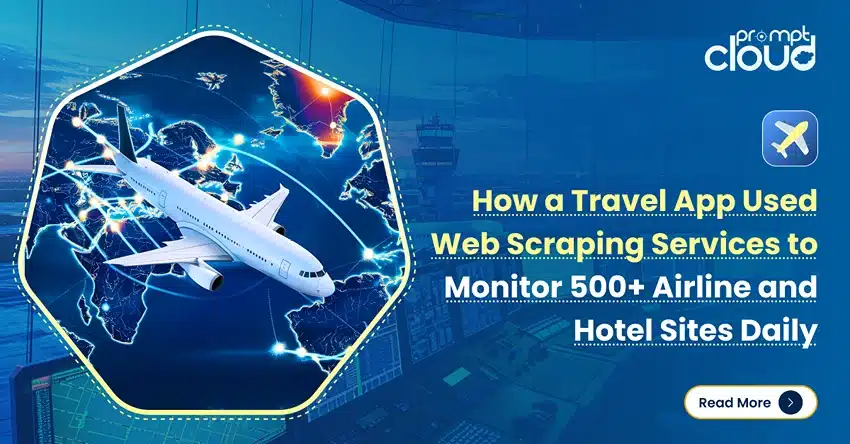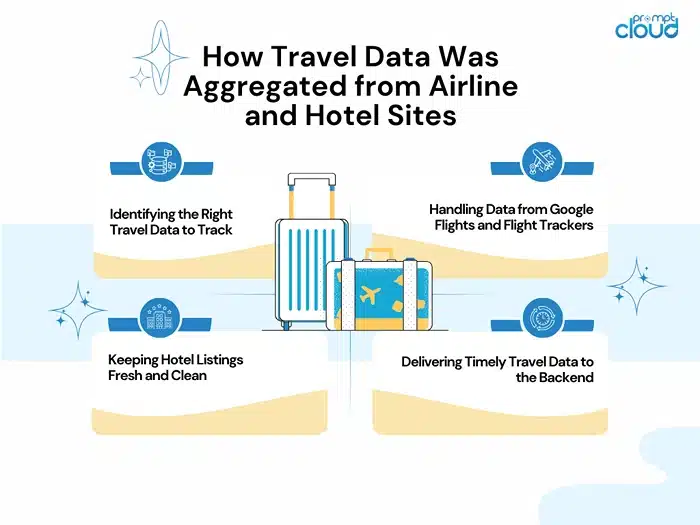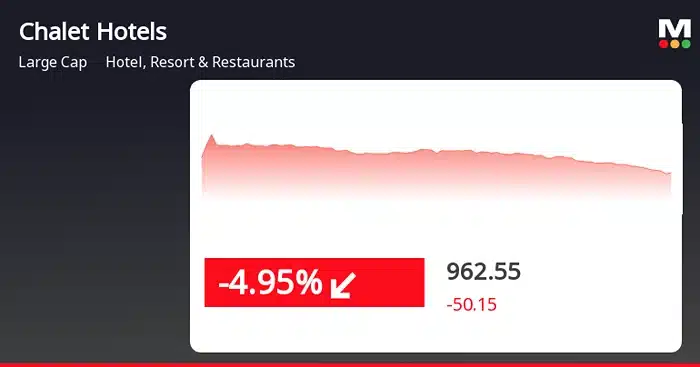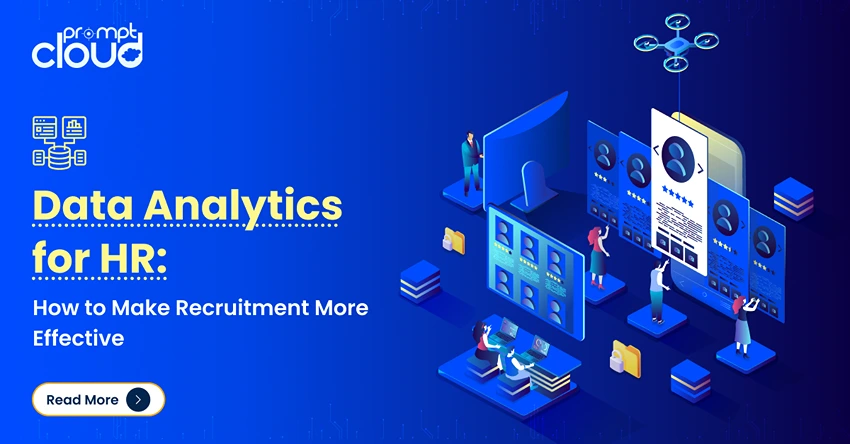
**TL;DR** One travel app was growing fast, but they started hitting a wall. They were trying to keep track of flight times, hotel prices, and availability from hundreds of different websites, more than 500. The problem? Things were changing way too often. By the time they updated their listings, the prices or availability had already shifted. They were using a mix of old APIs and some manual updates, but it wasn’t enough. Users were starting to notice, and not in a good way.
That’s when the team decided to bring in a web scraping service provider. Instead of building everything in-house, they got help from a company that could handle the technical side of pulling travel data from hundreds of sources every single day. This included prices, availability, and even data from Google Flights and live flight trackers.
Once the scraping setup was running, the app saw big improvements. Users started getting more accurate pricing, better recommendations, and faster updates. Bookings went up, user trust improved, and the app finally had the fresh data it needed to compete with the best in the business. This case study walks through exactly how they did it, and why it worked so well.
Why Travel Apps Need Fresh, Real-Time Travel Data
Anyone who’s ever tried to book a flight or hotel online knows the deal: it’s a game of timing. Prices don’t just change daily. They change by the hour, sometimes even by the minute. You think you’ve found a great fare, refresh the page, and it’s suddenly $80 more. It’s frustrating as a traveler. But for the people building travel apps? It’s a whole different headache.

Image Source: illumin.usc.edu
One product manager I spoke to put it this way: “It’s like trying to catch smoke.” Airline prices, hotel availability, and room rates they’re in constant motion. And if your app can’t keep up, well, users will bounce. They’ll go check Google Flights or some other flight tracker, and they probably won’t come back.
That’s the challenge. Most travel platforms rely on older APIs or patchwork data sources. Some of it updates in real time; some of it lags by hours. It’s unreliable. You end up showing a hotel that’s no longer available or quoting a flight price that’s already gone up. It doesn’t exactly inspire confidence.
But there’s a flip side. Apps that do get it right, those that manage to serve up fresh, trustworthy data, stand out. People stick around. They book more. They recommend it to their friends. And getting there doesn’t mean hiring 30 engineers to manually pull data from 500 different websites. There’s a smarter way to do it.
This article walks through how one travel app got past that hurdle. They decided to stop chasing down data manually and got outside help from people who knew how to collect it properly. It took a bit to get everything working right, but once things clicked, the app started showing way more accurate info. Users weren’t getting outdated prices anymore, and people were finishing their bookings instead of dropping off halfway. It turned out to be a big shift in how things worked and how people used the app.
The Challenge: Scaling Data Collection Across 500+ Travel Sites
At first, the travel app didn’t need to monitor hundreds of websites. In the beginning, the app didn’t need anything too complex. They were getting by with data from a handful of partners, a few public APIs, and some light refreshes during the day. For a while, that setup did the job. The user base was still small, and no one expected instant updates or perfect accuracy.
But as more people joined, the cracks started to show. A hotel would appear in the app with the wrong price, or worse, show as available when it was already fully booked. Flight times weren’t syncing fast enough. The team began getting support messages from users saying things like, “Why did the price jump right when I tried to book?” or “This room doesn’t exist anymore.”
The reality was, they were dealing with a massive amount of change—hotel rates going up and down constantly, flights being delayed or canceled, and listings being updated on the fly. Travel data is fluid by nature. Prices shift based on demand. Rooms get snapped up in real time. Airlines roll out last-minute deals or remove options with no warning. To keep up, the app needed to watch over 500 airline and hotel websites around the clock.
Doing that manually or with outdated tools just wasn’t realistic. The team tried patching together a system using a mix of legacy APIs, caching layers, and scheduled updates. But it became clear pretty quickly that the whole setup couldn’t scale. Some sources didn’t even offer usable APIs, and many of the ones that did were inconsistent or rate-limited. They were flying blind half the time.
The bigger problem? Every missed update or delayed price sync chipped away at user trust. People might tolerate one bad experience, but not two. And in a market where travelers can easily switch to another app—or just search on Google Flights—it doesn’t take much for them to leave.
The team needed a new approach. Something reliable. Something that could pull in large volumes of up-to-date data from hundreds of sites and do it without burning out their internal resources. That’s when they started seriously looking into professional web scraping services.
The Solution: Using a Web Scraping Service Provider for Daily Monitoring
Eventually, it became obvious—they were falling behind. Too many sites, too many updates, and not enough hands to keep things moving. They tossed around the idea of building their system to pull the data, but the more they dug into what that would take, the more it started to look like a full-time job, or several. It was one of those things that sounds simple until you sit down and try to map it all out.
Instead, they decided to work with a company that already knew how to do this. Not just basic scraping, but full-scale, constantly updated travel data. The kind where a room gets added or a fare drops, and within an hour, it shows up in the app. They didn’t have to worry about writing crawlers, setting up rotating IPs, or fixing things every time a site changed its layout. That part was handled.
The only thing the app team needed to do was tell them what to look for—hotels, flights, room types, dates, prices. The scraping team did the rest. They built out the jobs, kept them running, and made sure the data stayed clean. And unlike the old system, this one didn’t fall apart when a site made a small change.
Over time, the data just got better. Listings showed the right prices. Flights were available when users clicked on them. People stopped writing in to complain that what they saw wasn’t what they got. It didn’t happen overnight, but you could feel the difference. The app felt tighter. More dependable.
How Travel Data Was Aggregated from Airline and Hotel Sites
Getting accurate, up-to-date information from over 500 travel websites sounds nearly impossible—but that’s exactly what this app needed to do. Flights change by the minute. Hotel listings come and go. Prices bounce around constantly. Instead of pulling everything in all at once, the team approached it piece by piece, starting with the data their users cared about most and building a system around it.

Identifying the Right Travel Data to Track
Not all travel data is equally useful. The app’s team worked closely with their scraping partner to narrow in on the key pieces: flight departure and arrival times, fare changes, hotel availability, room types, and nightly rates. They also gathered other important details—things like free cancellation options, check-in times, and extra fees that users usually miss.
By focusing on what drives booking decisions, they avoided wasting time on unnecessary data and made sure the information coming into their system had real value.
Handling Data from Google Flights and Flight Trackers
Some sources were more challenging than others. Google Flights, for instance, doesn’t make it easy to scrape directly, and flight tracking sites tend to update constantly. But thanks to their web scraping service provider, the app didn’t have to worry about the technical roadblocks. The scraping infrastructure could detect changes and adjust quickly, even when the layout or structure shifted on the source sites.
This meant users were seeing nearly live updates—flight delays, new routes, fare drops—all reflected in the app without delay.
Keeping Hotel Listings Fresh and Clean
Hotel data brought its own set of challenges. A single property might show up on five different websites with different rates, fees, and availability windows. On top of that, rooms would appear and disappear throughout the day depending on demand.
To solve this, the scraping partner cleaned and standardized the data before sending it over. Duplicate entries were removed. Listings that were no longer valid were filtered out. What landed in the app was a clear, sorted set of options that matched what users would see if they clicked through to book.
Delivering Timely Travel Data to the Backend
Once all that information was collected, it had to move fast. The backend system was built to take in data updates and push them directly to the user interface without much lag. That meant the app could reflect real-world changes within hours—or in some cases, just minutes.
For users, it felt like everything just worked. Flights shown were real. Hotels were available. And prices didn’t jump between screens.
Monitoring Hotel Prices and Dynamic Flight Data in Real-Time
Once the travel app had a solid data collection system in place, the next challenge was making sure that the information stayed fresh, especially for prices and schedules that change constantly. Static updates weren’t going to cut it. Users expect real-time insights when it comes to flights and hotels. If prices shift or a room sells out, the app needs to reflect that right away.
That’s where real-time monitoring came into play, and it turned out to be one of the most important upgrades to the entire platform.
Tracking Hotel Prices as They Fluctuate Throughout the Day

Image Source: marketmojo
Hotel prices aren’t fixed—they move all the time. A single room might go through five different rates in one day, depending on demand, time, or booking window. The app’s old system couldn’t track these shifts fast enough, which meant people were often shown outdated prices.
With scraping now running in the background, rates were pulled multiple times a day, sometimes even hourly, for high-traffic properties. If a discount popped up, the app could show it before the user searched elsewhere. That alone helped the platform stay competitive against bigger players with more resources.
Following Real-Time Flight Data Without Relying on APIs
Flights can be unpredictable. Delays, gate changes, price spikes, sudden cancellations—these things don’t follow a pattern. Traditional APIs often had lag times or required expensive licenses. The team needed something faster and more flexible.
Instead of depending on slow or limited APIs, the team pulled flight details straight from airline sites and tracking platforms. That way, if a fare dropped—say from $220 to $190—it showed up in the app almost instantly. And if a flight got delayed or rescheduled, users saw that change without any noticeable lag. No waiting around for some outside service to update.
Detecting When Deals Disappear or Availability Drops
One of the biggest frustrations for users is clicking on a deal, only to find out it’s no longer available. Before, this was a common issue for the app. By the time a user tapped “book,” the deal was already gone.
Now, with constant data refreshes, the app could spot when something disappeared and remove it from search results quickly. This meant users only saw listings they could actually act on. It wasn’t just better for bookings—it built trust. People stopped second-guessing the platform and started relying on it for up-to-the-minute accuracy.
Building Smart Alerts and Dynamic Recommendations
With this new stream of live data, the app was able to do more than just display results—it could make suggestions. If the price dropped on a hotel someone had viewed earlier, it could trigger a notification. If a flight became available again or opened up with a lower fare, the app would highlight it on the home screen.
These features weren’t possible with slow, once-a-day updates. They came directly from having a fast, flexible scraping system that could track changes in near real time.
Business Outcomes: More Bookings, Better Retention, and Competitive Pricing
Once the travel app had real-time travel data flowing in, the effects started showing up quickly. Users weren’t just staying longer—they were completing their bookings. Fewer people were dropping off midway through a search. And support tickets complaining about outdated listings? Those slowed to almost nothing.
But the real shift came from how the app started performing across the board. It wasn’t just better data—it was better business.

A Noticeable Jump in Booking Rates
One of the first things the team noticed was a bump in conversions. People who used to browse and bounce were now going all the way through to checkout. It made sense—if the prices were accurate and the listings were live, there was less hesitation. Fewer users felt the need to double-check on other platforms, which meant more completed bookings within the app itself.
In just a few months, the app saw a double-digit lift in booking volume. That wasn’t from paid ads or promos—it came from trust and data accuracy.
Stronger User Retention with Fewer Drop-Offs
Before the scraping setup, retention was hit or miss. People might come back once, maybe twice, and then drop off if the experience doesn’t feel reliable. Now, with up-to-date flight and hotel data showing consistently, users had a reason to keep checking in.
Some users began treating the app like part of their routine. They’d check it in the morning for fresh deals, look up flight changes on the go, or browse hotel options during breaks. That sort of everyday habit doesn’t happen by accident. The team could tell that keeping the data current played a big role in making it stick.
A Competitive Edge on Pricing
Competing with larger platforms isn’t easy, especially when they have bigger budgets and direct deals with providers. But having access to fresh data gave this app a way to punch above its weight. By picking up on sudden price drops or flash hotel deals, the app could surface those offers before they are widely seen.
That meant it wasn’t just showing the same results as other platforms—it was sometimes showing better ones. And that made users more likely to return, because they saw value in checking the app first.
Lower Support Overhead and Fewer Complaints
Another benefit? The customer support team wasn’t constantly chasing down issues caused by stale listings or broken prices. Since the data was accurate and up to date, fewer users reached out with problems. That freed up time and resources to focus on more valuable support needs, rather than patching over things the system should’ve caught.
Why Choosing the Right Web Scraping Service Provider Matters
At first, the idea of scraping seemed simple—just collect the data, plug it into the app, and you’re done. But that view didn’t hold up for long. Once they dug in, it became obvious this wasn’t something you set up once and forget about. They were dealing with hundreds of sites, each with its layout, quirks, and update cycle. And those sites didn’t stay the same for long. If one piece broke, the whole thing could fall out of sync.
They needed help from people who had done this before—and could do it every day without needing handholding.
There’s a Big Difference Between Running a Script and Running a System
It’s easy to find tools that claim they can scrape websites. Some even work—for a little while. But scraping five hundred travel sites isn’t like scraping a few blogs or storefronts. Layouts shift, pages load differently, and some sites are built specifically to block scraping. The app team had no interest in fixing broken scrapers every week.
The provider they went with had already dealt with those problems before. Their system didn’t crumble when a site changed its design. They had backups, rotation systems, and ways to dodge rate limits—stuff that would’ve taken the app months to build on their own.
Travel Data Comes with Its Own Mess
If you’ve worked in travel, you already know how strange the data can be. One hotel might show different prices depending on where you look. Flight info can vanish mid-search. A deal might be live one hour and gone the next. It’s unpredictable.
The scraping team understood that. They weren’t just dumping raw data into a file and calling it a day. They cleaned things up. Grouped listings that belonged together. Filtered out junk. What the app got back was structured and usable, not a mess that needed fixing.
Fixes Happened Before They Became Problems
One of the biggest reasons the partnership worked. Things got fixed fast. Most of the time, the app team didn’t even know something had broken until they saw the fix already in place. That kind of response made a difference. It lets the product team focus on the user experience instead of babysitting the backend.
Scaling Didn’t Mean Starting Over
As the app expanded, the team wanted to bring in more types of data—stuff like smaller airlines, unique hotels, even short-term rentals. If they had gone with a basic setup or tried building everything themselves, adding new sources would’ve meant going back to square one each time. That just wasn’t sustainable. But this provider had built things flexibly from day one. Adding new sources didn’t require a reset—it was just another input.
Scaling Your Travel App with Automated Data Collection
In the world of travel, speed and accuracy aren’t nice-to-haves—they’re expected. People book flights and hotels based on what they see at the moment. If your app can’t keep up, they’ll move on without thinking twice. That’s the reality this travel platform faced before switching to a more automated, scalable approach.
By teaming up with a scraping provider that knew the space, they solved problems that had been slowing them down for months. Listings became more reliable. Prices lined up. And most importantly, users noticed. They stopped bouncing halfway through searches. They started booking more often. Some even made the app part of their daily routine.
This wasn’t some big overhaul or fancy rebuild. They didn’t need to start from scratch or invent something new. Honestly, they just needed a way to get solid data without burning out the team. Building their own scraping system? That would’ve taken months they didn’t have. Competing with the big names on infrastructure? Not realistic. What worked was finding someone who already knew how to handle the heavy lifting—someone who could just take care of it.
If you’re building anything in the travel spaceflights, hotels, or a mix of both, the lesson here isn’t complicated. Growth depends on having the right data, and not just bits and pieces.
You need all of it, and it must be up to date. More importantly, you need a dependable way to keep it coming without burning out your team. That’s what sets apart the apps that survive from the ones that take off. Reach out to us at sales@promptcloud.com
Frequently Asked Questions
1. Is it okay to scrape data from airline and hotel websites?
It really comes down to the approach. Most sites show their prices and listings publicly, so if you’re smart about how you gather it and don’t cause any trouble, it’s usually not an issue. The team behind this app made sure their setup respected site limits and didn’t overload anything. Still, it’s smart to talk to a lawyer before doing anything big.
2. Why not just use APIs for flights and hotels?
The team tried that. Some APIs were fine, but a lot were outdated, slow, or just missing key details. Others didn’t exist at all. Scraping let them get the exact data they needed, when they needed it. Not perfect, but way more flexible.
3. How often should a travel app update its listings?
As often as it can. Stuff changes fast—hotel prices, seat availability, delays, all of it. If your app shows stale info, people will stop trusting it. In this case, they were pulling updates several times a day, and it made a huge difference.
4. What kind of data can you scrape from these sites?
A lot, honestly. Prices, times, room types, cancellation rules, even guest reviews. It really depends on what’s out there publicly. The key is figuring out what helps your users and focusing on that, not scraping everything just because you can.
5. What should you look for in a scraping partner?
Someone who knows what they’re doing—especially in travel. You don’t want a vendor that breaks every time a site changes its layout. Look for a team that’s handled this kind of scale before and who can step in quickly if something goes sideways.



















